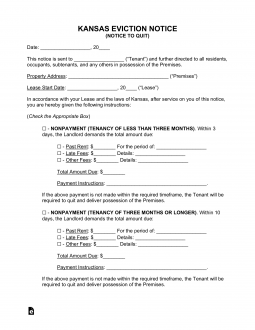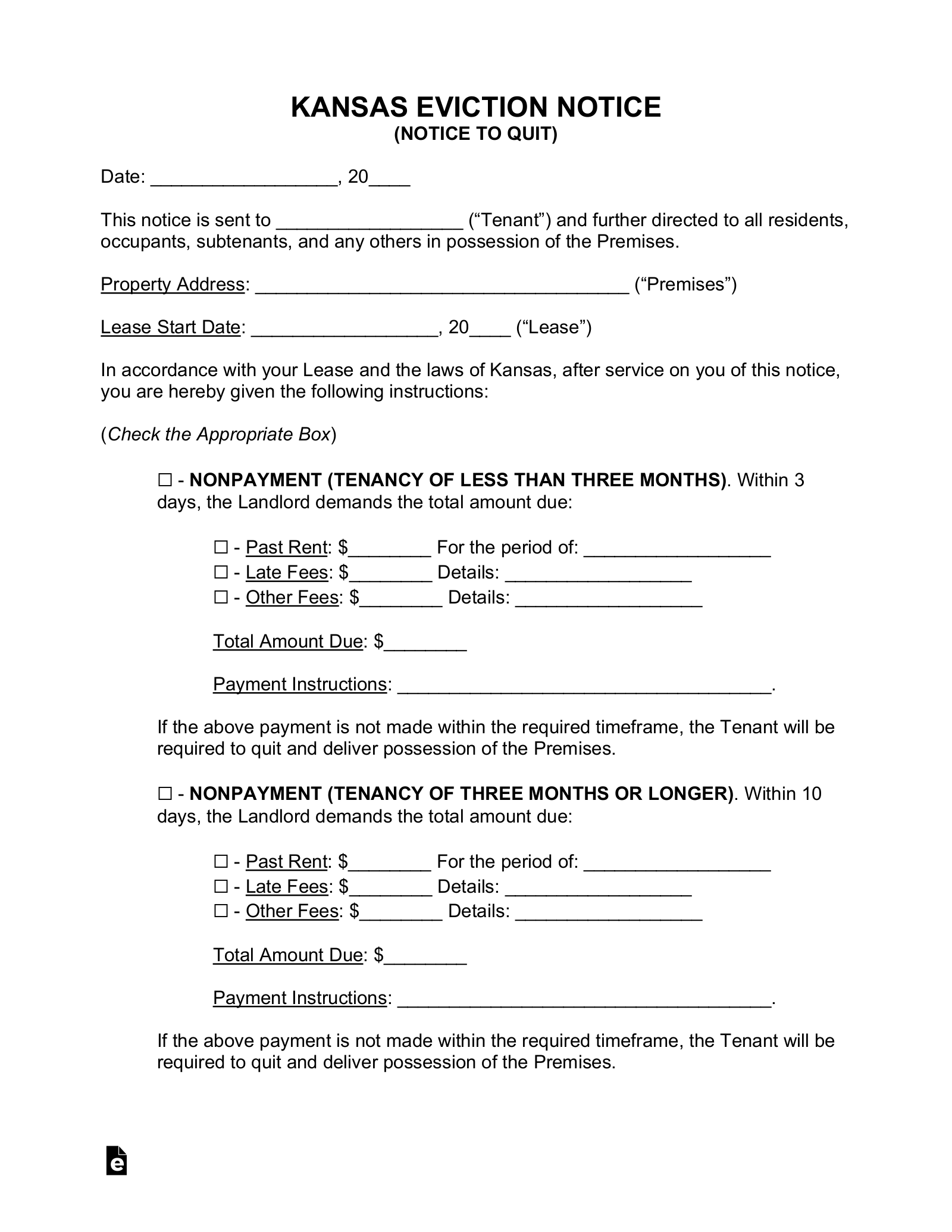Updated March 17, 2024
A Kansas eviction notice is a letter given to a tenant by a landlord when the terms of the lease have been broken. The landlord will issue the notice to quit along with the specified violation and statutory time period the tenant has to fix the issue. If the issue is not fixed, the landlord will be forced to pursue an eviction action against the tenant.
By Type (5)
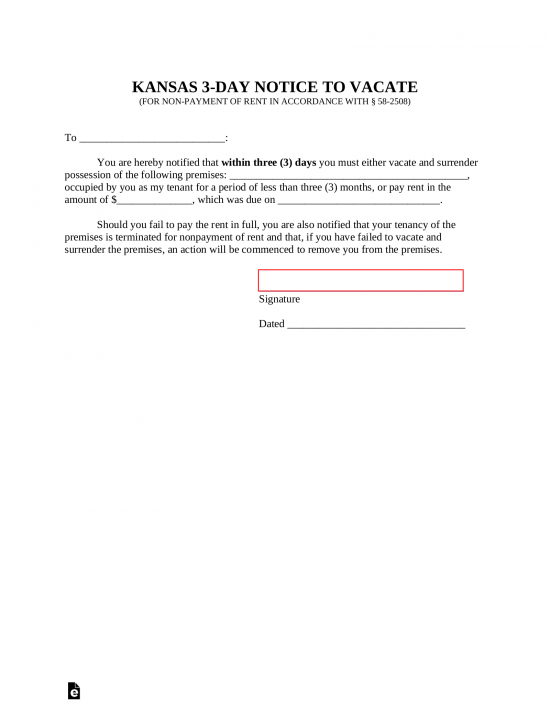 3-Day Notice to Quit (Non-Payment)– For tenancies of less than 3 months. 3-Day Notice to Quit (Non-Payment)– For tenancies of less than 3 months.
Download: PDF, MS Word, OpenDocument |
 10-Day Notice to Quit (Non-Payment) – For tenancies of 3 months or longer. 10-Day Notice to Quit (Non-Payment) – For tenancies of 3 months or longer.
Download: PDF, MS Word, OpenDocument |
 14-Day Notice to Quit (Non-Compliance) – The tenant has 14 days to correct the lease violation. If they do not correct the issue, they will have 30 days to vacate the premises. 14-Day Notice to Quit (Non-Compliance) – The tenant has 14 days to correct the lease violation. If they do not correct the issue, they will have 30 days to vacate the premises.
Download: PDF, MS Word, OpenDocument |
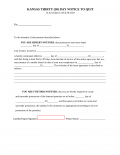 30-Day Notice to Quit (2nd Non-Compliance) – A tenant is given this notice if they have violated their lease in the same manner for the 2nd time in the last 6 months. There is no option for the tenant to remediate and they shall be forced to move within one (1) month. 30-Day Notice to Quit (2nd Non-Compliance) – A tenant is given this notice if they have violated their lease in the same manner for the 2nd time in the last 6 months. There is no option for the tenant to remediate and they shall be forced to move within one (1) month.
Download: PDF, MS Word, OpenDocument |
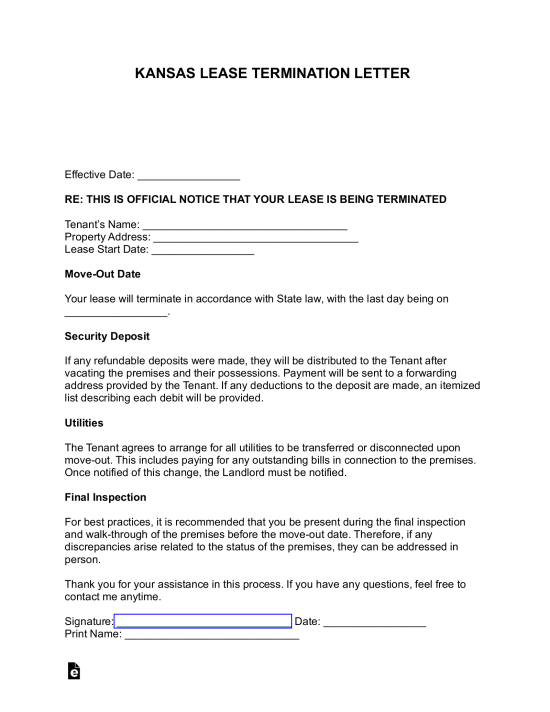 30-Day Notice to Quit (Month-to-Month Tenancy) – For all tenancy at wills in Kansas the landlord or tenant must provide at least thirty (30) days’ notice in order to cancel the arrangement. 30-Day Notice to Quit (Month-to-Month Tenancy) – For all tenancy at wills in Kansas the landlord or tenant must provide at least thirty (30) days’ notice in order to cancel the arrangement.
Download: PDF, MS Word, OpenDocument |
Table of Contents |
Court Forms
Civil Cover Sheet – This document must be filed along with the Petition for Eviction. It provides a brief description of the case.
Petition for Eviction – This is the document that the landlord uses to initiate an eviction any type of eviction action. It is to be filed with the Clerk of Court.
Summons – Following the filing of a Petition for Eviction, the court will produce a Summons which will be served on the tenant indicating that they are being sued and that they must appear in court.
Journal Entry of Judgment – This is a document completed by the judge handling the case that indicates that the plaintiff should be awarded immediate possession of the property. It is to be served on the tenant following the hearing with a Certificate of Service.
Writ of Restitution for Immediate Possession – This document also gives permission to the Sheriff’s Department to remove the tenant only it demands that they do so immediately.
Certificate of Service – The Certificate of Service is used to prove that a document was served on the defendant.
How to Evict a Tenant (5 steps)
- Deliver Eviction Notice to Tenant
- File Petition for Eviction with District Court
- Serve Summons and Petition on Tenant
- Send Judgment and Certificate of Service to Tenant
- File Writ of Restitution
1. Deliver Eviction Notice to Tenant
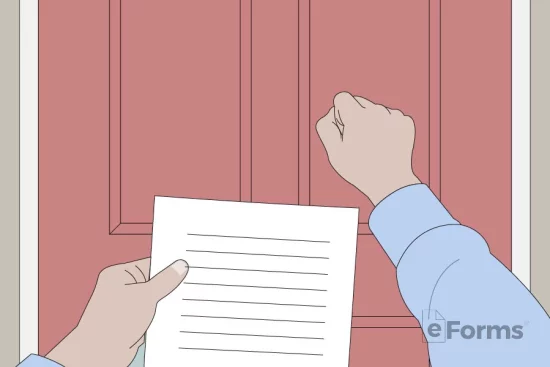
Before going to court to have a tenant removed from his or her property, a landlord must provide requisite written notice to the tenant of his or her intentions to seek a legal remedy for non-compliance with the terms of the lease. Written notice must be delivered in person, posted in a conspicuous place, or mailed by certified mail. If mailed, add two days to the notice requirement. There are different notice forms available depending on the reason for seeking eviction:
2. File Petition for Eviction with District Court
If the tenant fails to respond to the notice, the landlord may begin the eviction proceedings. This will begin with the completion of the Civil Cover Sheet and the Petition for Eviction (one original and two copies for every tenant). The Petition for Eviction must be signed by the landlord in the presence of a Notary Public.
All forms must be filed in the District Court of the County where the property is located. The filing fee varies by jurisdiction and the amount of rent owed.
3. Serve Summons and Petition on Tenant
After the filing, the landlord must obtain the Summons (one original and two copies) from the Clerk. This will state the Court Hearing Date, and this form must be served on the tenant (defendant) along with the Petition for Eviction by the County Sheriff.
4. Send Judgment and Certificate of Service to Tenant
After the hearing, the landlord must complete the Journal Entry of Judgment (one original and two copies) and send it to the tenant along with the Certificate of Service.
5. File Writ of Restitution
If the tenant remains on the property after the judgment, the landlord has the option of filing the Writ of Restitution (one original and two copies), which will get the County Sheriff involved and the tenant will be removed within ten days.

